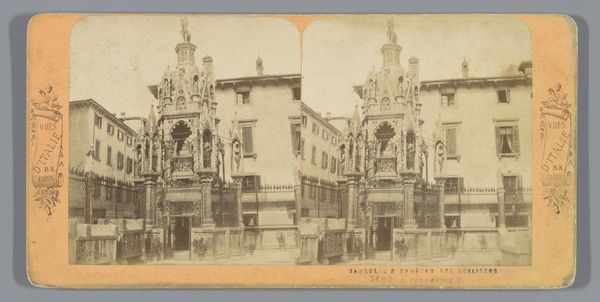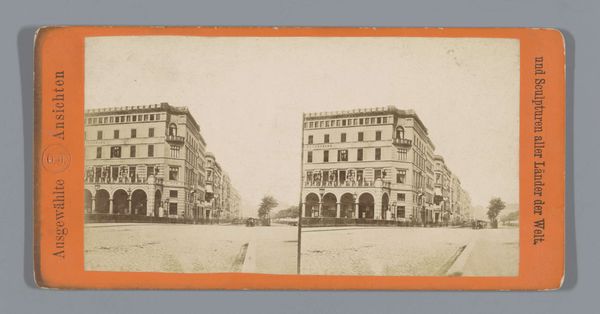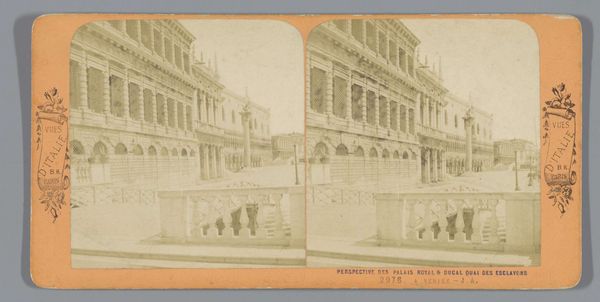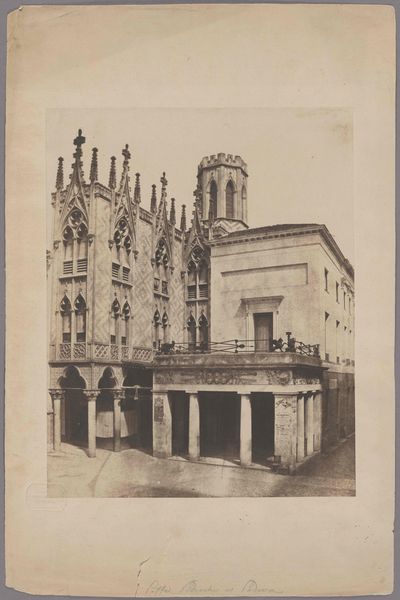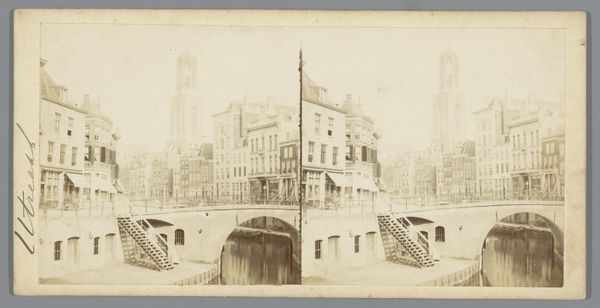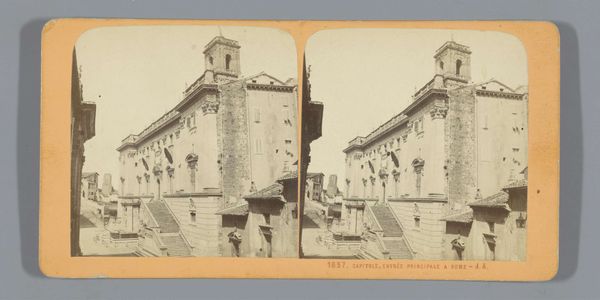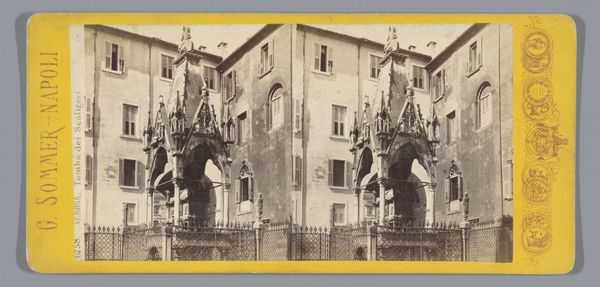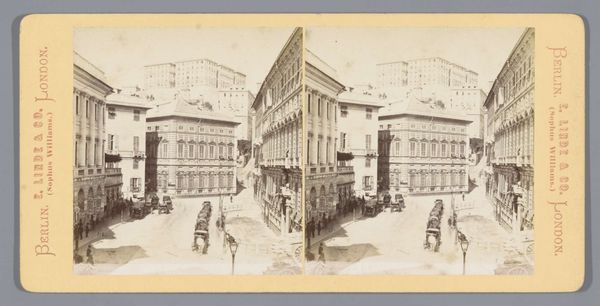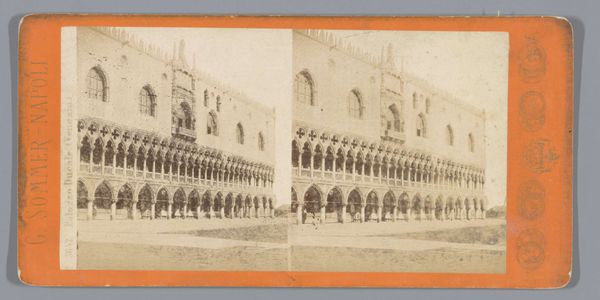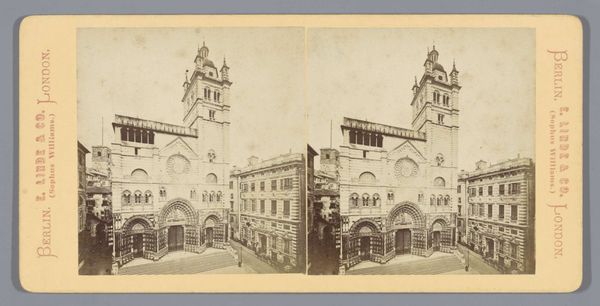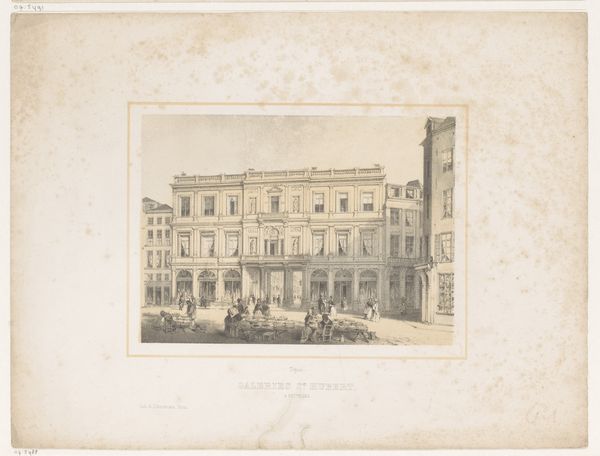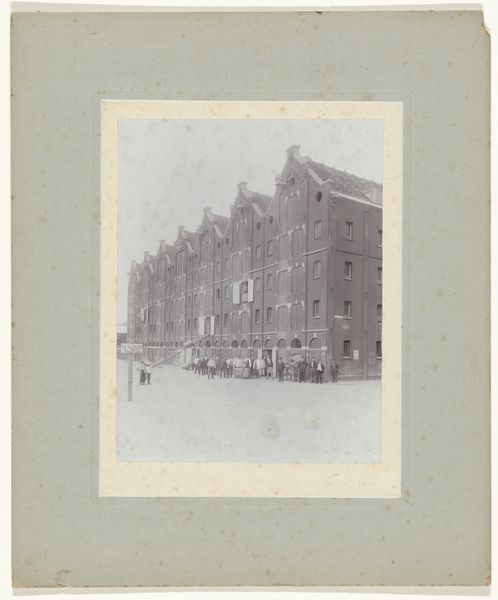
Gezicht op de graftombe van Cansignorio della Scala, onderdeel van de Arche Scaligere, Verona 1872 - 1876
0:00
0:00
Dimensions: height 88 mm, width 176 mm
Copyright: Rijks Museum: Open Domain
Editor: Here we have a gelatin silver print from between 1872 and 1876 by Jean Andrieu depicting a cityscape—specifically, the tomb of Cansignorio della Scala. There's something so still and formal about it. What strikes you about this image? Curator: I see here not just a record of a physical place but a document reflecting 19th-century European anxieties around power, death, and legacy. Look how the photographer positions the tomb in relation to the building. What does it tell us about the relationship between individual ambition and social structures of the time? Editor: I see what you mean! The imposing tomb against what looks like an average building… almost suggests tension. It definitely adds a layer of complexity beyond just architectural documentation. Curator: Exactly! And consider the choice of neoclassicism—it's no accident. By employing this style, the artist implicitly evokes the grandeur and power structures of classical antiquity, prompting us to question how historical narratives are constructed and deployed. How might this aesthetic choice contribute to the viewer’s perception of power dynamics? Editor: So, it's not simply about showcasing the tomb but about asking questions regarding power, and historical narratives at play? Curator: Precisely. The photographic medium, still relatively new at the time, lends a supposed objectivity to the scene. Yet, every artistic choice – composition, lighting, framing – injects a subjective viewpoint. Understanding those choices reveals the underlying social and political messaging. Editor: I hadn't considered how much the very act of photographing adds layers of meaning to the tomb itself. I thought it was a direct representation of the architecture and cityscape! Curator: Think about it – does this image invite admiration, critical reflection, or perhaps something in between? The beauty of engaging with art history is in acknowledging that the past speaks to us in complex and multifaceted ways. Editor: It definitely pushes me to think more critically about visual media and its underlying messages.
Comments
No comments
Be the first to comment and join the conversation on the ultimate creative platform.
